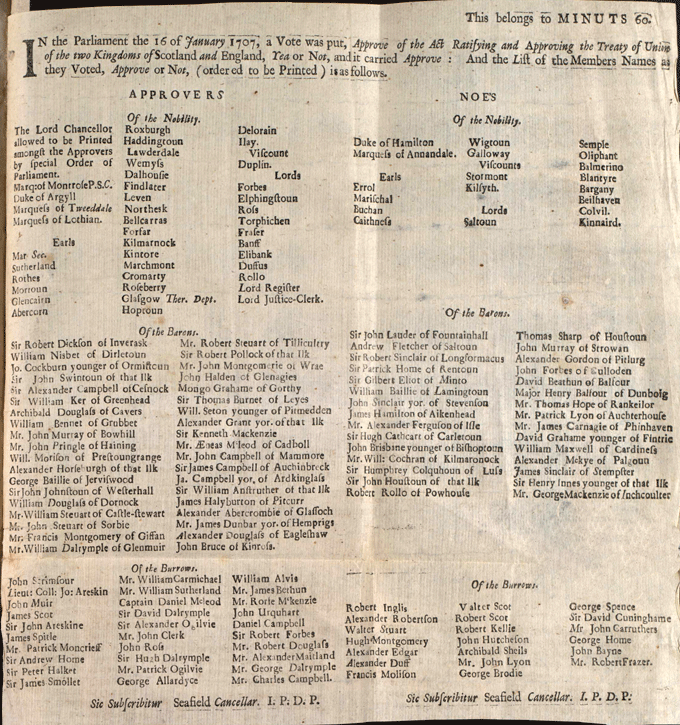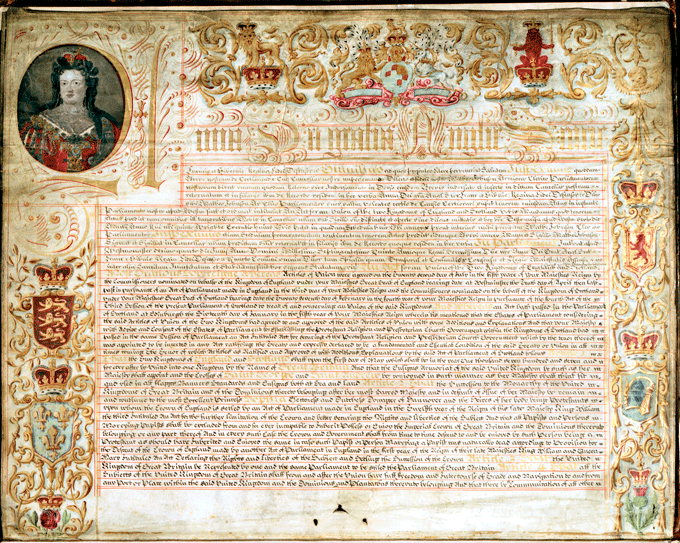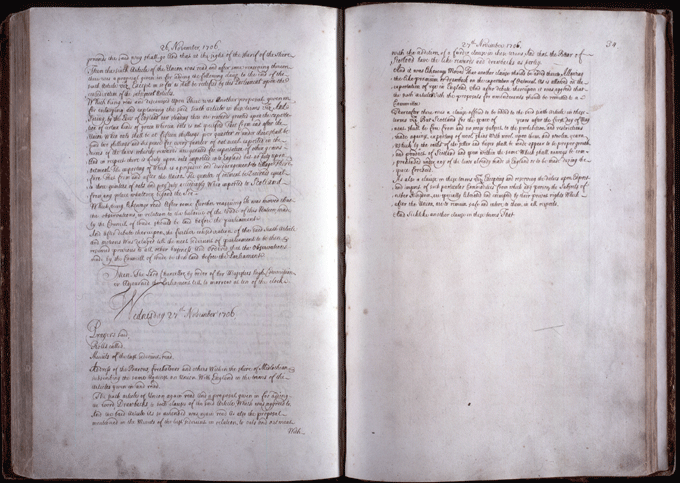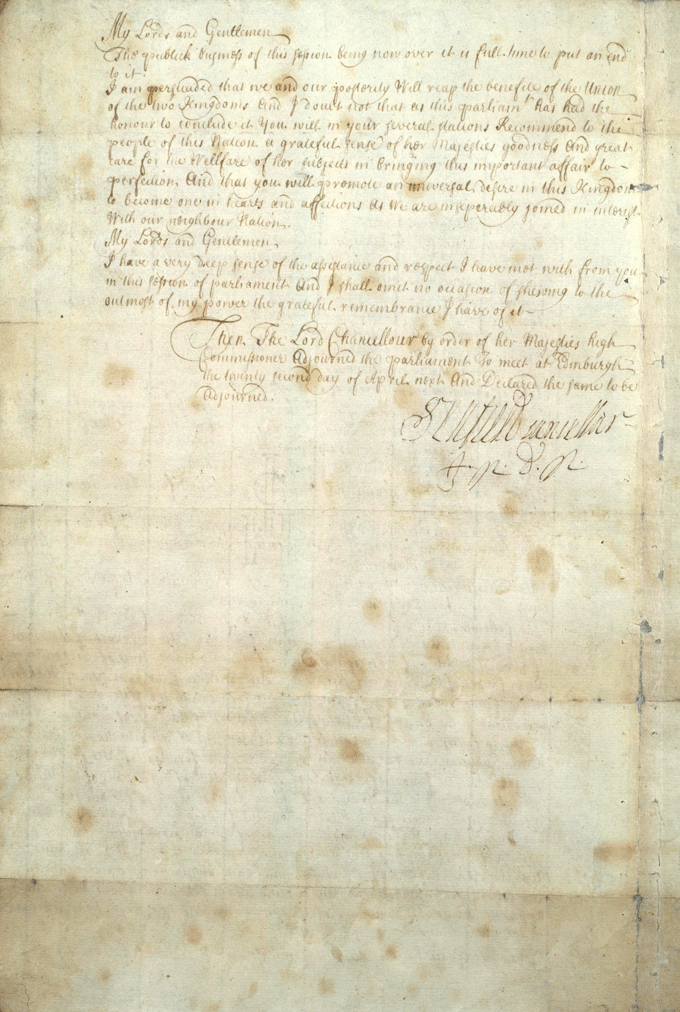| | Home | Resources | Schools Programme | Teachers | Site help | About us | Contact us | |
| You are here: Home > Resources >The Union of 1707 > The Union Achieved |
The Union AchievedOn 16 January 1707, at the end of three months of debate, the Scottish Parliament finally voted on the whole Treaty, including the Act of Security for the Church of Scotland. The Final Vote |
||||
The Final VoteThe vote went as follows:  The union was carried by a majority of 43. The government had a 2:1 majority among the nobility. By careful management and the distribution of rewards, the usual method of oiling the wheels of politics at the time, the government got the Articles of Union through. A sum of £20,000 was made available to help matters. The support of the Squadrone Volante was crucial. Many of them had lost money in the Darien scheme and they were promised control of the compensation for the disaster. The Church dropped its opposition to the union when the Act of Security for the Church of Scotland was passed at the same time which protected the established presbyterian government of the Church. 
(National Records of Scotland, Register House papers, RH18/4/14) |
||||
|
||||
The Exemplification of the Act of UnionAfter the Treaty had been passed in the Scottish Parliament, it went before the English Parliament and received royal assent on 6 March 1707. The Queen ordered an official copy of the English act to be sent to Scotland. This copy, known as the Exemplification of the Act of Union is dated 7 March 1707. The document is illustrated with a portrait of Queen Anne and various symbols of both Scotland and England. Details of the illustrations can be downloaded as an Acrobat PDF file (552 KB, opens in new window). 
(National Records of Scotland, State papers, SP13/210 p.1) | ||||
The End of the Scottish ParliamentThe last volume of the Acts of Parliament breaks off dramatically in mid-sentence on 27 November 1706, in the middle of a debate about the sixth article of union and export duties. This register was compiled from minutes of proceedings in Parliament and other papers that still survive to record the final few months of its existence. 
We do not know the reason for the sudden halt in the register. As these volumes were written up considerably later than the events they recorded, it is unlikely that the clerk was stopped by anti-union rioting. As the clerks were employed personally by the Lord Clerk Register, one possible explanation is that this clerk, John Corse, stopped work when he heard of the death of the Clerk Register in 1708, thinking that he might not be paid. Transcript of the entry for Wednesday 27 November 1706:Wednesday 27th November 1706 (National Records of Scotland, Acts of Parliament, PA2/39) | ||||
The Last Speech in the Scottish ParliamentThe last session of the Scottish Parliament met on Tuesday 25 March 1707. Various last acts and petitions were granted, then the Queen’s High Commissioner, the Duke of Queensberry closed proceedings with a final speech. The best known comment on the end of the Parliament is the Earl of Seafield’s remark when he signed the Act of Union: Now there’s ane end o’ ane auld sang. A new song began with the opening of the new Scottish Parliament on 6 May 1999. 
Transcript:My Lords and Gentlemen I am persuaded that we and our posterity will reap the benefite of the Union My Lords and Gentlemen (National Records of Scotland, Warrants of Parliament: PA6/36) | ||||
|
|